THE ALL-NEW ROUBAIX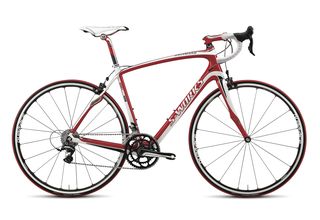
The top-end S-Works Roubaix gets a complete redesign for 2011, with new tube shapes and a new approach to the rubber Zertz vibration dampeners—mounted in the fork and seat stays—that have become a visual hallmark of the Roubaix design.
Since its introduction about seven years ago, the Roubaix line has largely come to define the “comfort-performance” category. These bikes generally have slightly relaxed geometries, longer wheelbases, and built-in vertical compliance for more forgiving rides, while still delivering the lateral stiffness, light weight, and high-end componentry of pure race bikes.
As was the case with previous models, the new S-Works Roubaix SL3 (S-Works is Specialized’s designation for it’s top-end products) arguably combines these qualities better than any other bike on the market.
The tendency with reviews of the Roubaix is to begin with the comfort-oriented features, since they are part of what gives the bike its distinctive look. But for 2011 the most striking changes have to do with the performance side of the equation.
Though I’ve had only a couple of four-hour rides on the new frame—not enough for a full evaluation—I can say that the pedaling and, especially, the front-end handling are noticeably snappier and more responsive. The slightly slower steering performance common to bikes in this category—a product of the long, stable wheelbases—almost vanishes here.
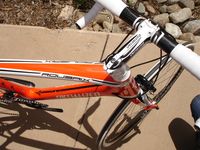
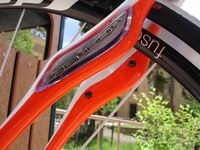
Frame weight, according to Specialzed, drops about 10 percent with the new design. The company claims that a 56cm frame weighs 965 grams, which is plenty light enough to build up a complete bike at or below the legal racing minimum of 14.9 lbs.
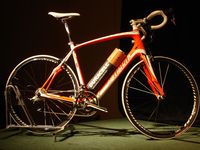
TARMAC TWEAK
Specialized’s top race model, the Tarmac SL3, remains unchanged for 2011 save for the fork. The bike that the riders of the Astana and Saxo Bank teams—including Alberto Contador and Andy Schleck—are racing in the Tour de France gets a new fork this year. Quite simply, Specialized widened the fork blades to further lock in the Tarmac’s already stiff front-end handling.
ALLEZ IS BACK
Specialized is also making a big push this year with its popular Allez line. The aluminum-framed Allez bikes are entry-level racers that have been completely redesigned for 2011. With virtually the exact same geometry as the Tarmac frames, plus the ultra-stiff characteristics of aluminum, the new Allez should be a more-than-capable racer, albeit with harsher ride than the carbon Tarmac.
HEAD AND FEET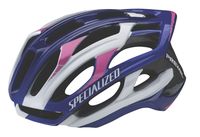
At a claimed weight of 185 grams (6.5 oz), the Prevail is only a gram heavier than Giro’s ProLight and a full 40 grams lighter than the S-Works lid. In addition to weight, Specialized claims the Prevail is also one of the best-ventilated and most aerodynamic (barring TT helmets) road helmets on the market.
Much of the weight savings is due to a reinforcing inner matrix that allows for less foam overall while still meeting all the necessary safety standards. But Specialized has taken out grams wherever possible. The adjustable buckle where the fore and aft straps on most helmets meet under the ear has been replaced with a fixed Y-junction that saves weight and, according to Specialized, creates a much more comfortable and easy-to-adjust fit around the ears and under the chin.
The S-Works shoe, my personal favorite, gets a few minor changes for 2011. The tongue now has a molded insert that allows for better fit and also provides enough structure that Specialized could clear out material for better ventilation. Additionally, where the Boa cable guide at the top of the tongue frequently snagged the sides of the shoe, a redesigned guide now stays completely out of the way.
Finally, the Boa dials have been reversed on the left shoe. Instead of turning clockwise to tighten, they now mirror the right side, so that tightening is achieved by turning the dials forward, regardless of which foot you’re adjusting. The goal is simplicity, for quick micro-adjustments while pedaling—though messing with the lefty-loosie directions we’ve all had drilled into since birth us might introduce more confusion than it avoids.
DON’T FORGET THE DIRT
Specialized ran its road and mountain-bike launches concurrently, so I haven’t had a chance to do much poking around the 2011 MTB line yet. But new offerings include a completely redesigned Epic race platform—in both 26- and 29-inch models—and a new five-inch-travel bike, called the Camber, that slots into the Specialized dirt line between the four-inch Epic and the company’s popular six-inch Stumpjumper FSR trail bike.
—John Bradley